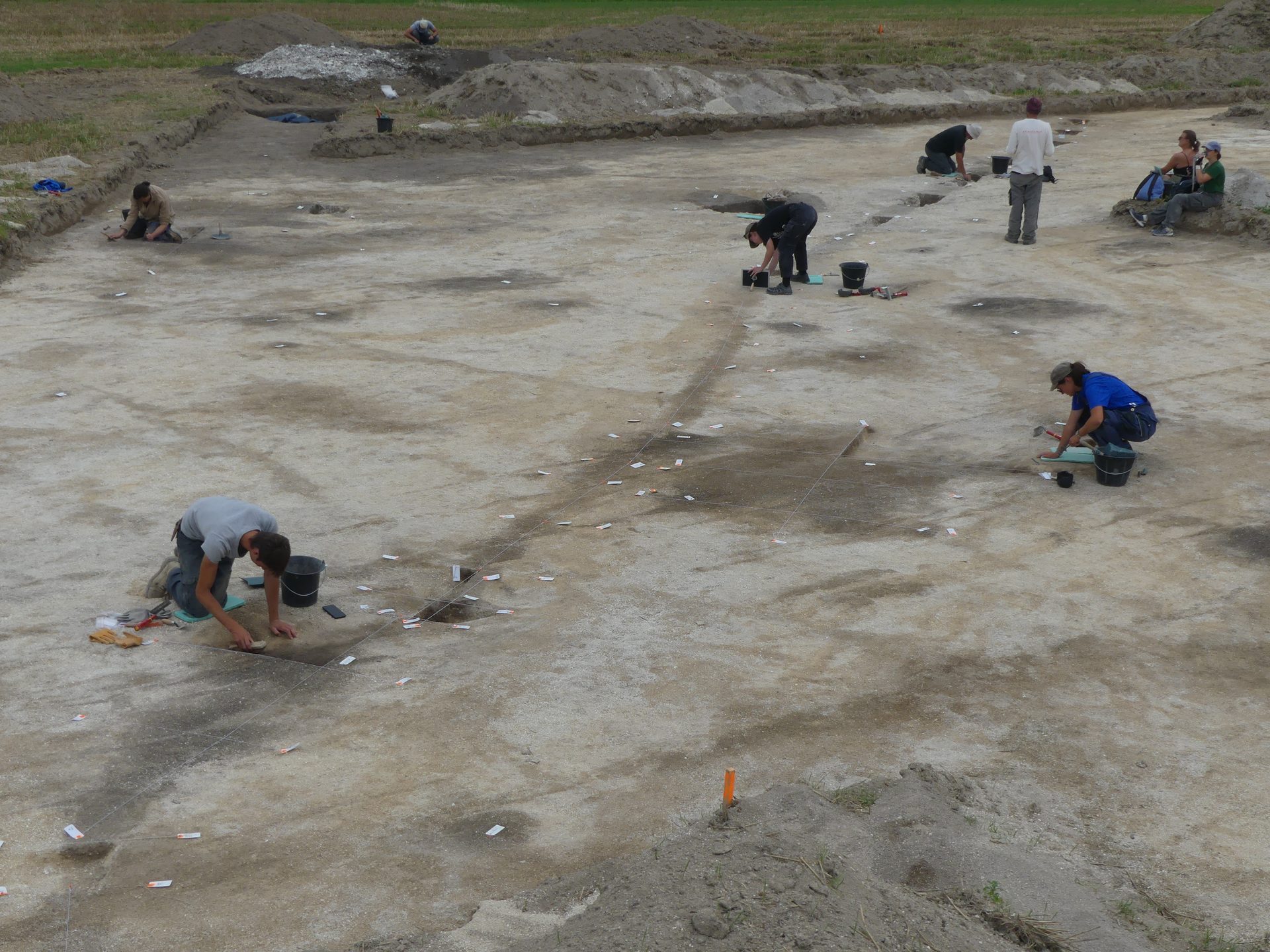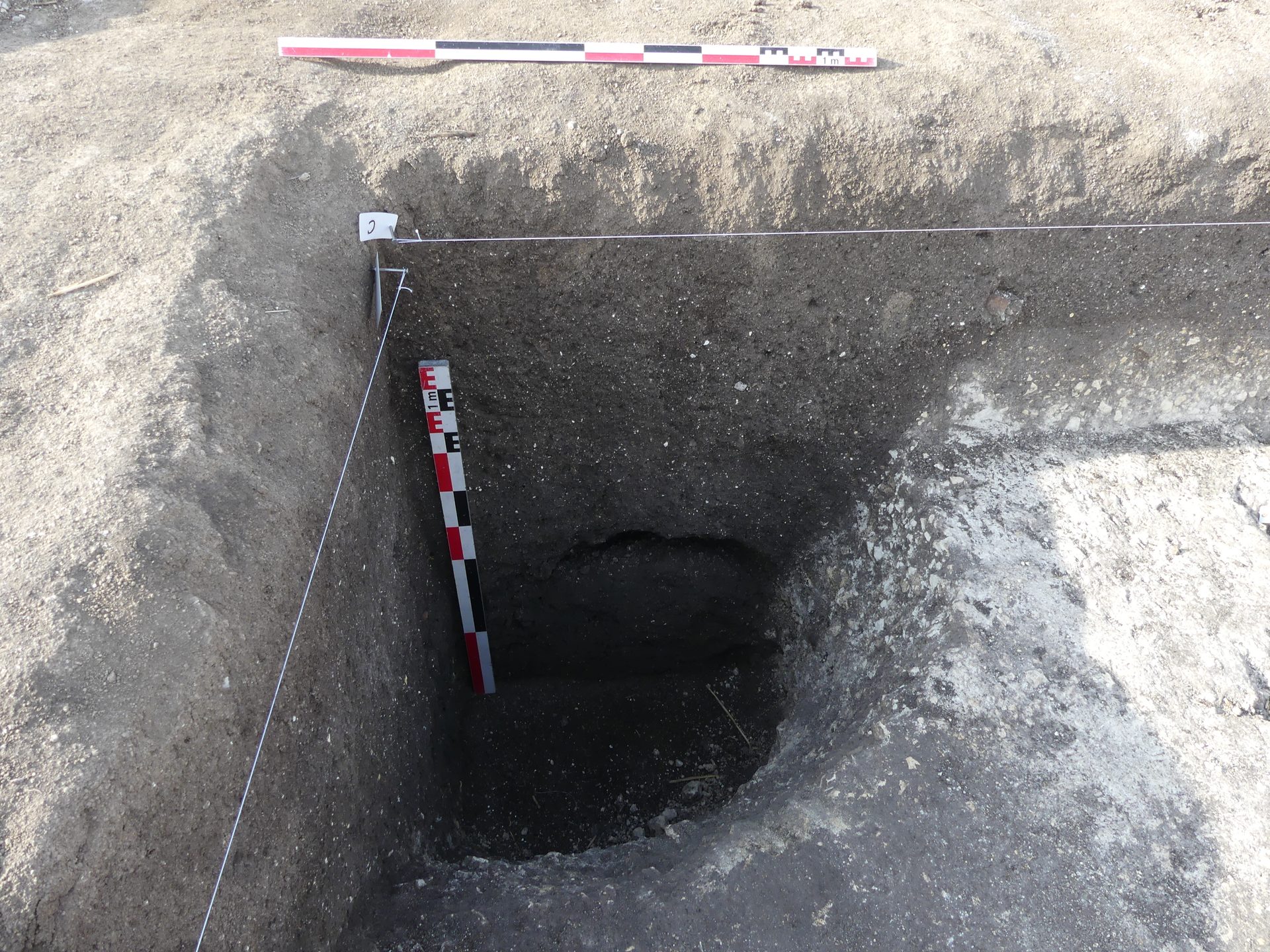A team of researchers from the French Centre for Scientific Research (CNRS) has uncovered a neolithic village in the Val-des-Marais commune of Marne in France.
Archaeologists have been searching for this village since flints were discovered in the same region a century and a half ago.
In the second half of the nineteenth century, the French Baron Joseph de Baye found flints in a field, indicating a prehistoric village's presence in the area. The amateur archaeologist began looking for the village but instead, found dozens of Neolithic underground collective graves known as hypogea.
In the end, the Baron of Baye would never find the village. But over the years, outdated archaeological methods nevertheless revealed many objects that were later stored in a museum in Taverny and eventually guided modern archaeologists in the right direction.

Traces of the palisade at the beginning of excavations. Credit: Rémi Martineau / CNRS
Rémi Martineau, co-manager of the dig from the French Centre for Scientific Research (CNRS), rediscovered these objects 20 years ago after he began working in the region. Nine years later, he began to assemble an on-the-ground team of various archaeological disciplines as well as a bigger research team to continue searching for the Neolithic village and studying their findings.
The 5000-year-old village was finally uncovered this summer by Martineau's team, including his co-lead Fabien Langry-François from the Institut national de recherches archéologiques préventives (INRAP).
The discovery began with the revelation of a large ditch with a row of clear holes that would have once held the posts of a palisade or enclosure. Just beside it, diggers found a well that gave the Neolithic people access to water from the water table they had built their village on.

General view of a part of the archeological site showing several pits, the building with an apse and various sections of the palisade. Credit: Jonathan Desmeulles / CNRS
Within the enclosure, the archaeologists unearthed a prehistoric building—a first building, Martineau emphasised, in the hope of discovering more structures in future digs—as well as giant pits 20 metres in diameter full of archeological theological material goods from the Neolithic age.
"This could just be a first discovery. Maybe we'll find other villages a couple of kilometres away—we have several hints," Martineau told The Brussels Times.
A groundbreaking revelation
The discovery of the Neolithic village is revolutionary because it challenges the previously held notion that the relatively unknown prehistoric people of northeastern France, Belgium and parts of Switzerland in this era were all part of the same cultural group.
Up until now, everything that historians could glean about their lives came from studying their deaths: the underground sepultures discovered throughout the Parisian basin and in Belgium.

The excavation of a well at the Val-des-Marais site. Credit: Rémi Martineau / CNRS
"Today, we believe there were various cultural groups within this region. This discovery is major because we will be able to redefine our understanding of their culture: who these people were, how they lived, etc.," Martineau confirms.
"I mean, wells to access the water table?" the researcher continued enthusiastically, "We knew that about other Neolithic people, like in the Plaine d'Alsace, for example. But that is a completely different time period and completely other culture."
In other words, these kinds of wells were unheard of for the Neolithic people living between 3000 and 3500 BC in northeastern France."This is a big first for us."

